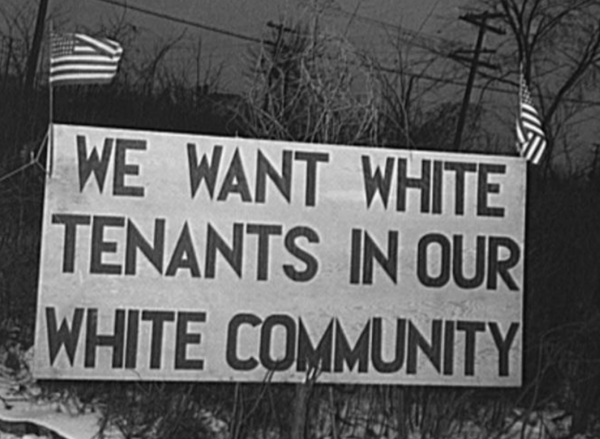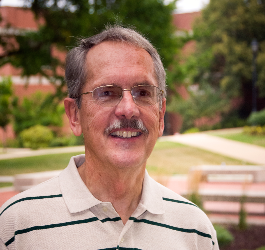
I’m an old white guy who’s learned a lot from several African American teacher-friends. One is Anthony, a PhD with 25 years experience. Two weeks after joining us, he asked me, “What is going on in this town? I hadn’t been here for ten days before I was called the n-word on the street!”
Another is Andre, a former graduate student who, after a pause in one of our reflective conversations, asked me, “John, why do white people hate us so much?”
Anthony and Andre make it impossible for me to ignore the toxic presence of whiteness in my community and the ways I’ve profited and suffered from whiteness all my life.
But Catherine Meeks[1]disrupted my complacency best when she asked those of us in a group she is facilitating to consider two novel ideas. The first is whether the term “white supremacy” may be better than “whiteness” or “white privilege” as a label for the focus of our work, and the second is to think about racism and white supremacy from the perspective of “spiritual formation.”
White Supremacy
The obvious disadvantage of the term “white supremacy” is its association with skinheads, neo-nazis, and other fringe radicals. A strong advantage of this term, though, is that it precisely describes the root belief that’s been central in the western world since at least the fifteenth century; namely, that humans can be divided into “races” according to visible markers such as skin color, hair texture, and eye shape, that there is a hierarchy of “races,” and that people with “white” skin, hair, and eyes are at the top, that white cultures, white values, white religions, and white practices are “supreme;” i.e., most desirable, most enlightened, most Christian, most just.
This notion of white supremacy can be traced back to the Doctrine of Discovery, the label given to three papal bulls, “Dum Diversas” (1452), “Romanus Pontifex” (1454), and Inter Caetera” (1493). In these documents, two Popes, Nicholas V and Alexander VI, directed Western European explorer-colonizers to “invade, search out, capture, vanquish, and subdue” all indigenous people they encountered as they explored and claimed land along the west coast of Africa and in the “new world.”
The bulls were issued to the kings of Portugal and Spain; however, since the Pope was the most powerful authority in the western world at the time, and since the provisions of these bulls were enormously empowering, the documents were adopted by every colonizing country in Europe. In 1823, the Doctrine of Discovery was also adopted into U.S. law by a unanimous Supreme Court in the case, Johnson v. McIntosh.
The Doctrine of Discovery dehumanized indigenous people by regarding their territories as being “inhabited only by brute animals.”[2]. This doctrine proclaimed all indigenous people to be “enemies of Christ,” who must be “reduced to perpetual slavery.”[3]
The Doctrine of Discovery was alive in the documents that founded the United States of America—for example, in the 3/5ths clause of the U.S. Constitution. The attitudes this Doctrine supports have helped justify U.S. slavery, Jim Crow laws, lynching, segregation, and the racist provisions of the G.I. Bill of 1943.
Importantly, these attitudes are alive today. Recent news accounts of a white woman in St. Louis attempting to block a black man’s access to his upscale apartment, and a white woman at Yale reporting a black graduate student to the police because she was napping in the common room of her residence hall are contemporary evidences. Racist events like these occur with regularity because, deep within western white consciousness, especially U.S. consciousness, is the long-lived conviction that people of color are less-than whites. Although few twenty-first century American shold this extreme and explicit a bias, an ancient and persistent form of it unquestionably marks our collective unconscious.
Spiritual Formation
The main value of Dr. Meeks’ invitation to think of anti-racism work in terms of spiritual formation is that this label can help us recognize that we’ll never get it perfectly right. Spiritual formation is a life-long quest.
Another advantage of this approach is that the term “Spiritual Formation” helpfully concentrates attention on specifically what is involved in moving from being “less spiritually formed” to being “more spiritually formed.” This continuum or sliding scale is anchored by a negative and a positive end-point. When these end-points are clearly understood, we will be empowered to identify specific spiritual conditions to avoid and those to strive toward.
The Negative Anchor: Failed Humanity
In her book Birth of a White Nation[4], Jacqueline Battalora explains the negative anchor with the help of the term “failed humanity.” Battalora first employs a widely comprehensible reference to Nazism. Virtually everyone has seen photographic documentation of the gas chambers, ovens, jammed barracks, and piles of corpses at the Buchenwald, Bergen-Belsen, and Auschwitz death camps. The atrocities documented in these photographs happened as a result of Nazi programs that utterly dehumanized Jews, Poles, Serbs, homosexuals, Jehovah’s Witnesses, and others. The thousands of perpetrators who committed these atrocities can only be understood as enacting failed humanity, abject denial of the membership in the human race of the persons they abused and executed.
Battalora describes racial lynching in the U.S. as her second historical example of failed humanity, “the most dramatic and clear display of the harm to white peoplethat is a direct result of white supremacy” (p. 98, italics added), and a program that was legally and religiously justified by the Doctrine of Discovery.
With the help again of the available archive of photographic evidence, Battalora displays and interprets five of the hundreds of photographs depicting lynching incidents in the twelve southern states between 1850 and 1950.
In reference to a photograph of the lynching of Rubin Stacy in Florida in July, 1935, she comments,
Look at how the people who stand behind the hanging body of Rubin Stacy are dressed. What does their dresssuggest? Look at how they are standing. What do their gestures and positioning/posturing say about their thoughts or feelings at the moment? Look at the young girl on the left with a big smile on her face. Look at the other even younger girls to the right of Rubin’s hanging corpse. Pay attention to the faces of those who are witnessing this murder, or at least its aftermath. What do you see? What would you expect to see in the face of one who retained her or his full humanity? (p. 99).
With reference to another photo, Battalora asks,
Photograph number four is of the charred body of Jessie Washington from 1916 in Waco, Texas. Look at the faces of the white participants. Do these faces reveal disgust and horror? How would you expect a person who exemplifies the capacities of human dignity to respond to the burning of a human being? (p. 99)
For me, it’s impossible to disagree with her conclusion that “These images reveal a defective humanity within those communities that enacted and participated in lynching, and within a nation that condoned lynching. . . “(p. 103). And, “While lynching is rare today in the United States, its legacy, like that of antimiscegenation law, naturalization law, and immigration policy, continues to shape relationships, neighborhoods, schools, and communities” (p. 104, italics added).
The Positive Anchor: The Way of Love
On May 20, 2018, American Episcopal Bishop Michael Curry defined the positive or right-hand anchor of the spiritual formation continuum in his sermon at the wedding of Prince Harry and Meghan Markle.[5]
Taking his cue from a scripture passage chosen by the bride and groom, Curry reminded his audience of more than two billionof the central message of Jesus of Nazareth. As Dr. King put it, “We must discover the power of love, the redemptive power of love. And when we do that, we will make of this old world a new world, for love is the only way.”
Curry’s sermon clarifies how love is the clear opposite of failed humanity. As he reminds us, when Jesus was asked to sum upthe teachings of Moses, he reached back into the Hebrew scriptures and said, “You shall love the Lord your God with all your heart, all your soul, all your mind and all your strength. This is the first and great commandment. And the second is like it: Love your neighbor as yourself.” And then, in Matthew’s version, Jesus added, “On these two, love of God and love of
In Curry’s words, Jesus of Nazareth “began the most revolutionary movement in human history,” and this entire movement is “grounded in the unconditional love of God for the world. . . and mandating people to live that love, and in so doing to change not only their lives but the very life of the world itself. I’m talking about power. Real power. Power to change the world.”
The opposite of failed humanity is other-oriented, self-sacrificing, redemptive love. It is the practice of unselfish, profound empathy with every human being and the humility to know in depth that the life of each Other in my world is entwined with mine, that I thrive only when they do, too.
Importantly, this picture complements teachings of other religions. As a Muslim commentator puts it, “In a Hadeeth[narration] The Prophet says, “By Him in Whose Hand my soul is, you will not enter Paradise unless you believe, and you will not believe unless you love each other.”[6] And in Hinduism, “Devotional love plays a determinative role in the whole religious practice; family love, married love and all secular forms of love are subordinate to the divine love or emotional love of God.[7] The understanding of love as fully-developed human spiritual formation is common to many cultures and religions.
THE SPIRITUAL FORMATION SCALE
FAILED HUMANITY ————————————-LOVE
Each 21stcentury human’s challenge is to live his life, mold her family, guide his business, form her government, practice his religion, lead her culture, and help shape every human system he inhabits in ways that move the human community toward the right-hand end of the spiritual formation continuum, away from failed humanity and toward love.
[1]Dr. Meeks is the retired Clara Carter Acree Distinguished Professor of Socio-Cultural Studies at Wesleyan College and serves the Episcopal Diocese of Atlanta as the chair of the Beloved Community Commission for Dismantling Racism. Her most recent book is Living Into God’s Dream: Dismantling Racism in America(New York: Morehouse Publishing, 2016).
[2]http://ili.nativeweb.org/sdrm_art.html
[3]“Romanus Pontifex,” https://doctrineofdiscovery.org/the-bull-romanus-pontifex-nicholas-v/
[4]J. Battlora (2013). Birth of a white nation: The invention of white people and its relevance today. Houston: Strategic Book Publishing Co.
[5]Bishop Michael Curry’s Royal Wedding Sermon: Full Text https://www.npr.org/sections/thetwo-way/2018/05/20/612798691/bishop-michael-currys-royal-wedding-sermon-full-text-of-the-power-of-love
[6]http://www.islamweb.net/en/article/156581/the-concept-of-true-love-in-islam
[7]http://history-of-hinduism.blogsp ot.com/2010/10/devotional-love-in-hinduism.html


